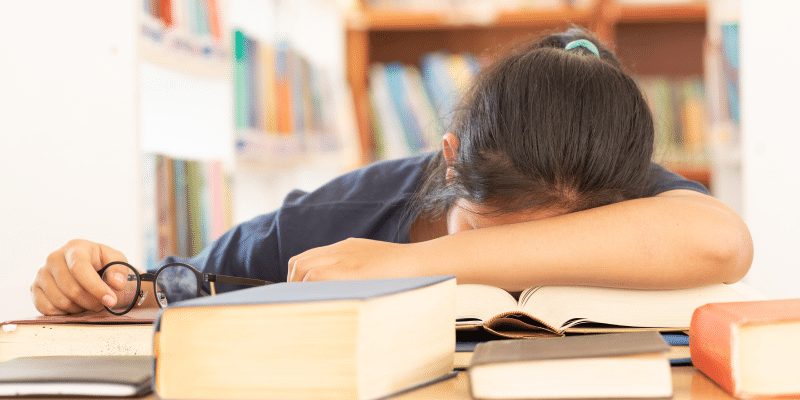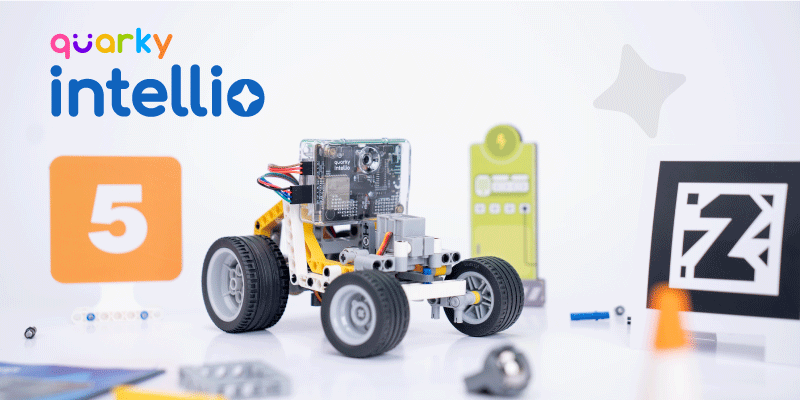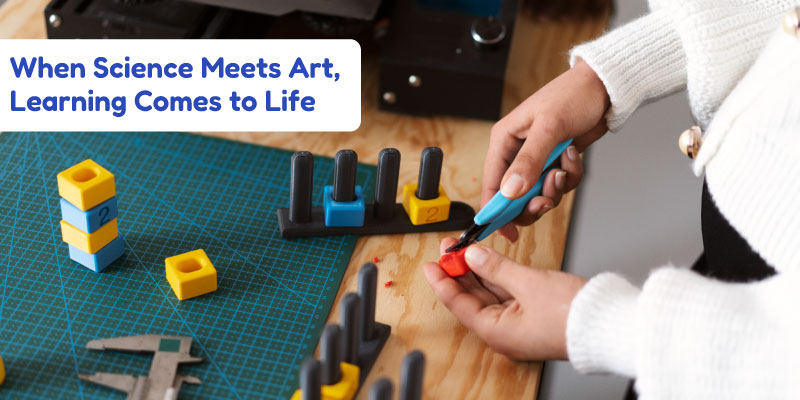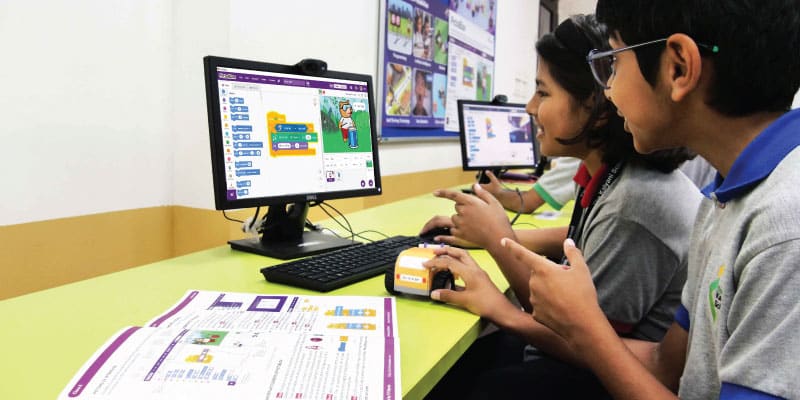Creativity is no longer just an artistic trait in today’s rapidly changing world. Rather, it is a fundamental skill necessary for innovation, personal growth, and integrating technology in education. Yet, a pressing question lingers in educational circles: Do schools kill creativity?
The concern underscores the possibility that educational systems might suppress the creativity they are meant to cultivate. This debate, famously sparked by Sir Ken Robinson‘s arguments, continues to resonate globally across classrooms and policy discussions.
As we delve into this complex issue, let’s highlight the problems and uncover strategies to revive innovation in education and foster creativity. Also, learn about STEMpedia’s transformative potential of integrating technology in education to prioritize 21st-century skills.
Understanding the Impact of Traditional Education on Creativity
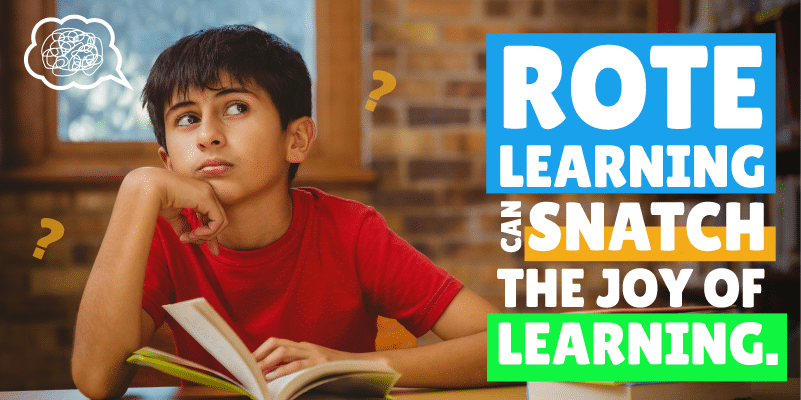
Every education system worldwide maintains a similar hierarchy of subjects, with Maths, English, and Science at the top. Meanwhile, arts, music, and dance are at the bottom.
But why is this the case? Why do creative fields not bear the same importance as subjects like Mathematics? Are these subjects not taught daily because our public education systems are designed with the expectation that all students will become doctors and engineers?
Experts criticize traditional classrooms for prioritizing conformity and standardization. These are environments where creativity in education does not thrive. This structure stems from educational systems developed during the Industrial Age, which valued academic ability above all to meet the demands of industrialism.
These systems often overshadow the critical importance of creative thinking and problem-solving skills by disproportionately emphasizing memorization and test performance. The result is a significant disconnect between the skills needed to navigate the modern world. Subjects prioritized in schools underscore a lack of interpersonal skills and experiential learning opportunities.
How Schools Can Overcome Barriers by Integrating Technology in Education
Schools face numerous challenges that can hinder creativity, including standardized testing, rigid curriculum structures, and limited resources. Education boards like CBSE, ICSE, and IB now mandate STEM subjects like ICT, AI, Coding, and Robotics to cater to these challenges.
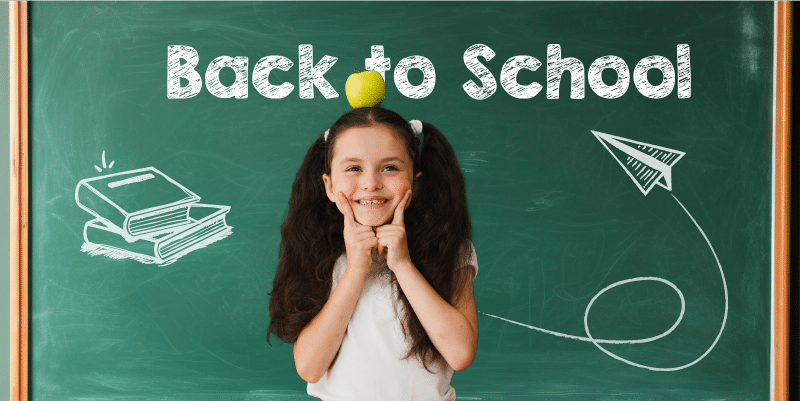
Many schools have transformed their traditional computer labs into innovative tinkering labs. So, what are you waiting for? The shift toward upskilling for self-development is already here, urging students and teachers to adopt new competencies. Here are strategies for schools to overcome these barriers by integrating technology in education:
- Redefine Assessment Methods: Transition away from traditional standardized tests. Introduce creative assessments that evaluate problem-solving and innovative thinking.
- Revise Curriculum Structures: Avail flexible and structured curriculums integrating technology in education to encourage interdisciplinary studies.
- Allocate Resources Strategically: Invest in cutting-edge technology and training to foster an innovative learning environment.
- Empower Educators with Technology: Prioritize professional development focused on technology in education. STEMpedia’s Teacher Development Program (TDP) equips educators with the skills to integrate modern technology effectively.
- Leverage Technology for Innovation: Embed technologies like AI, coding, and robotics into daily learning activities. This integration engages students and prepares them for the technological demands of the future.
Schools can significantly enhance creativity and innovation among students and educators by addressing these barriers and emphasizing technology in education.
How Teachers Can Strategize to Integrate Technology in Education
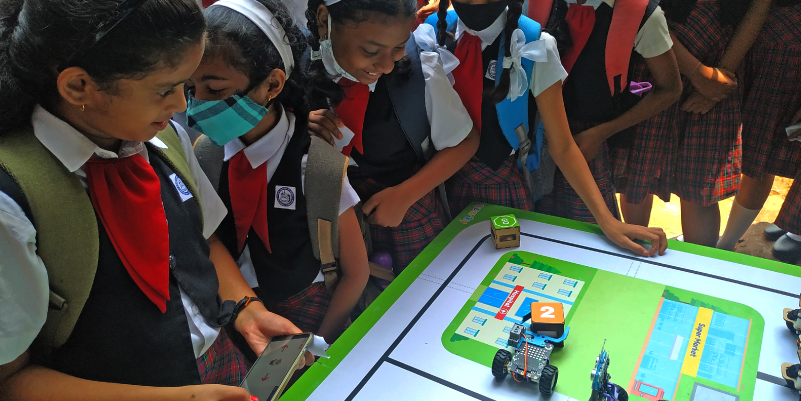
Teachers can transform classrooms by adopting technology that enhances learning and fosters creativity. Here are a few student engagement strategies:
- Incorporate Activity-Based Learning: Engage students with AI, coding, and robotics through real-world challenges. This method promotes 21st-century skills and develops curiosity among students for innovation in education.
- Blend Arts with Technology: Encourage students to combine creative arts with technology in education. Introduce digital music production or graphic design to enhance creative expression and technical skills.
- Utilize Interactive Platforms: Boost student engagement by employing educational technology tools like PictoBlox to allow hands-on experimentation with AI, ML, Coding, and AR/VR.
- Integrate Robotics Education: STEM kits for kids can develop interpersonal skills and digital literacy. Promote students’ use of Quarky DIY AI and Robot kits for remote project collaboration. This approach sparks innovative project ideas among students, enhancing creativity in education.
- Personalized Learning Curriculum: Apply AI to tailor learning experiences to individual student needs, ensuring a more personalized and engaging educational journey.
- Enhance Assessments with Technology: Revolutionize assessments by integrating technology in education. Take online quizzes and interactive assessments for instant feedback, enhancing learning outcomes.
By embracing these student engagement strategies, you can effectively leverage technology in education to cultivate creativity and ensure dynamic, relevant learning experiences. Such practices enhance innovation in education and prepare students for the technology-driven future.
Want to bring creativity in teaching? Enroll in our Professional Development for Teachers program and become a certified AI educator.
Empowering Students to Embrace Creativity
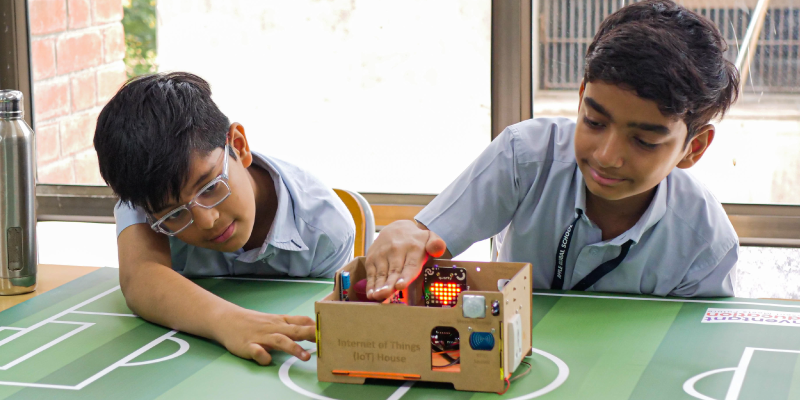
Can creativity be taught?
You bet!
Creativity is more than just a spark; it’s a skill you can get better at with practice. Think of it as learning a sport or playing a video game; the more you practice, the better you get.
Here at STEMpedia, we’re committed to integrating technology in education. We have all the cool tools you need to create games and stories. From Do-It-Yourself robot kits to AI and Coding platforms, you ask for it, and we will deliver it. Gain hands-on learning with activity-based learning projects and see your wild ideas come to life with the aid of technology in education.
Curious about how things work? Tinker with new ideas, and don’t be afraid to ask “what if?” Push the boundaries of your imagination and challenge what you know. This is your playground to think differently and solve problems in your unique way.
Remember, being creative means making mistakes and learning from them, so keep trying new things. Each mistake is a stepping stone to something great. Let’s make creativity your superpower and gear up for all the exciting challenges ahead!
Case Studies and Success Stories
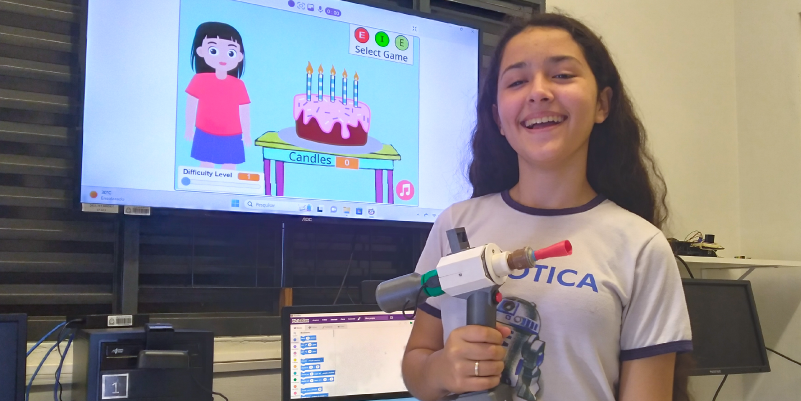
Students need to think outside the box, and for that, we need to offer them platforms to bring their ideas to life. Making mistakes and innovating are key parts of learning. A competitive mindset, critical thinking, interpersonal skills, soft skills, and effective communication are crucial qualities that competitions can help develop.
One such competition is Codeavour, the world’s biggest AI, Robotics, and Coding competition for students. Aligned with the objective of UNSDGs, it challenges participants to apply their knowledge in real-world scenarios. Thereby pushing them to strategize, collaborate, and communicate effectively.
Success stories from Codeavour participants demonstrate the transformative effects of the competition on student engagement and learning outcomes:
These examples reveal how Codeavour enhances students’ competitive spirit and significantly improves their creative problem-solving capabilities and teamwork skills, fostering a culture of innovation within schools.
In A Nutshell
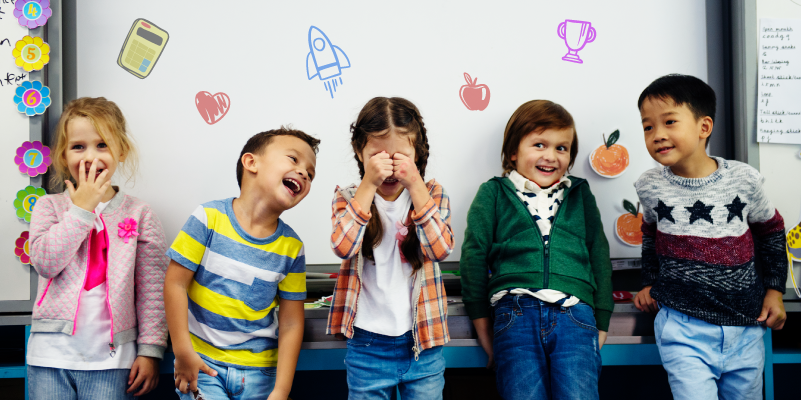
Nurturing creativity is crucial for leveraging technology in education to develop our students’ innovative capacities. By fostering a dynamic and engaging learning environment that integrates technology in education, we prepare them not just for what the world is but for what it could be.
As educators, policymakers, and parents, we must support initiatives like Codeavour that promote creativity and equip students with 21st-century skills. We must also replace our traditional computer labs with innovative tinkering labs. Students must learn that academic intelligence is not everything, and they must develop a passion for creating things.
It’s time for a collective effort to revive innovation in education, recognizing that intelligence is diverse, dynamic, and distinct. Together, let’s empower our students to explore possibilities, think differently, and be prepared to navigate the future and shape it through original ideas with value.

